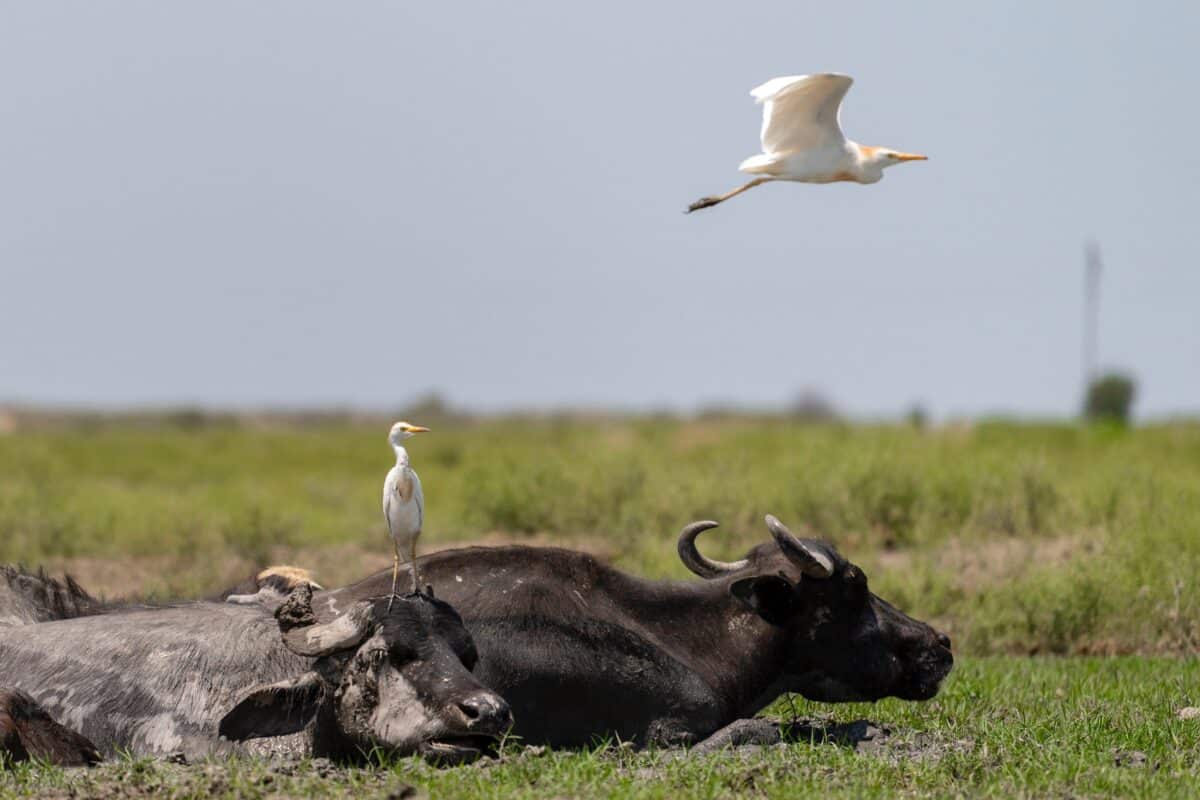This post will uncover the most extraordinary animal symbiotic relationships – all essential for the balance of our ecosystem’s and for our planet to thrive.
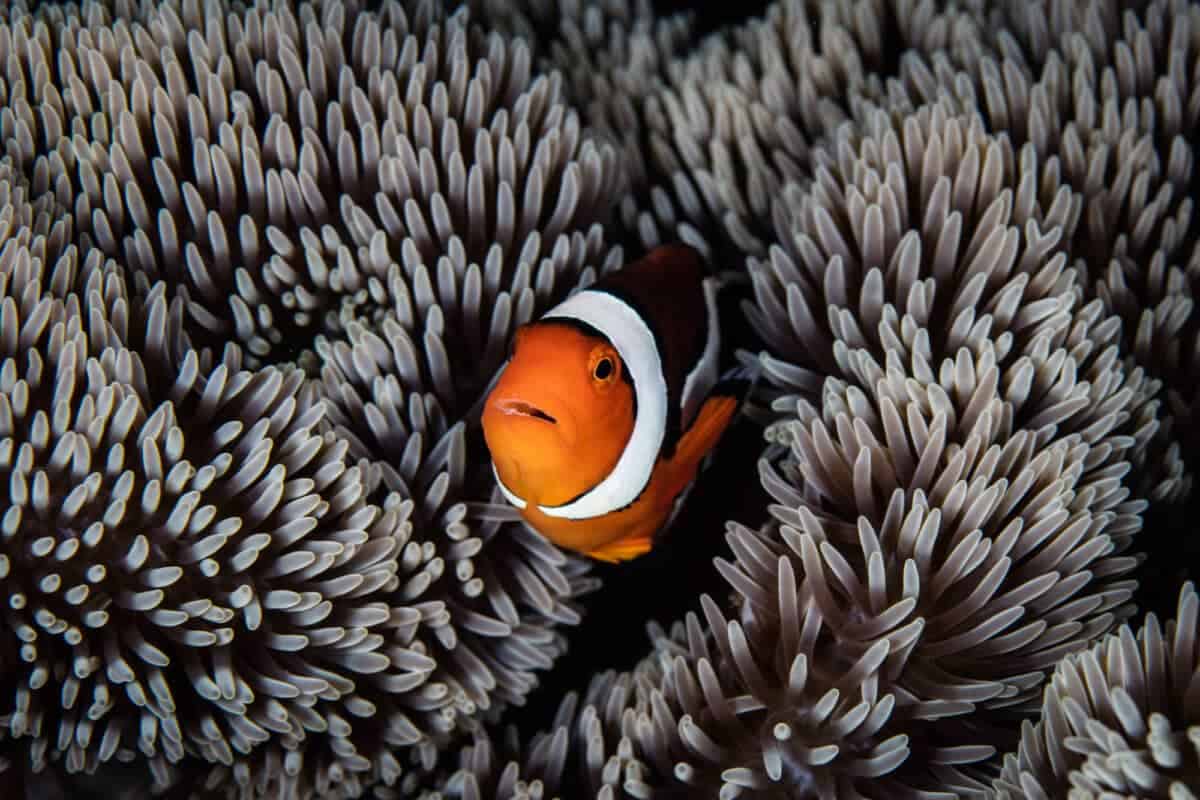
Nature is a masterful architect of interconnections, weaving intricate relationships among its inhabitants to create a delicate web of life. Within this intricate tapestry, symbiotic relationships stand as some of the most captivating phenomena.
Symbiosis is a biological term referring to the intimate and often long-lasting association between two or more species. Symbiosis is characterized by the mutual exchange of nutrients, shelter, or protection between different organisms. This exchange may be beneficial or detrimental to each party, depending on the nature of the relationship.
Through the lens of symbiosis, we gain a deeper understanding of the delicate balance that sustains ecosystems. From the smallest of creatures to the largest predators, animal symbiotic relationships demonstrate the power of unity and shared resources in the grand theater of life.
Key Points
- Symbiotic relationships are crucial for the survival and thriving of species in the animal kingdom.
- There are three different types of symbiotic relationships; including mutualism, commensalism, and parasitism.
- One of the most important symbiotic relationships is the relationship between honeybees and flowering plants. It promotes pollination, ensures the propagation of plants, and provides a food source for bees.
- Disruption of symbiotic relationships can have negative consequences, such as the decline of pollinators impacting plant reproduction and overall ecosystem dynamics.
Importance of Animal Symbiotic Relationships
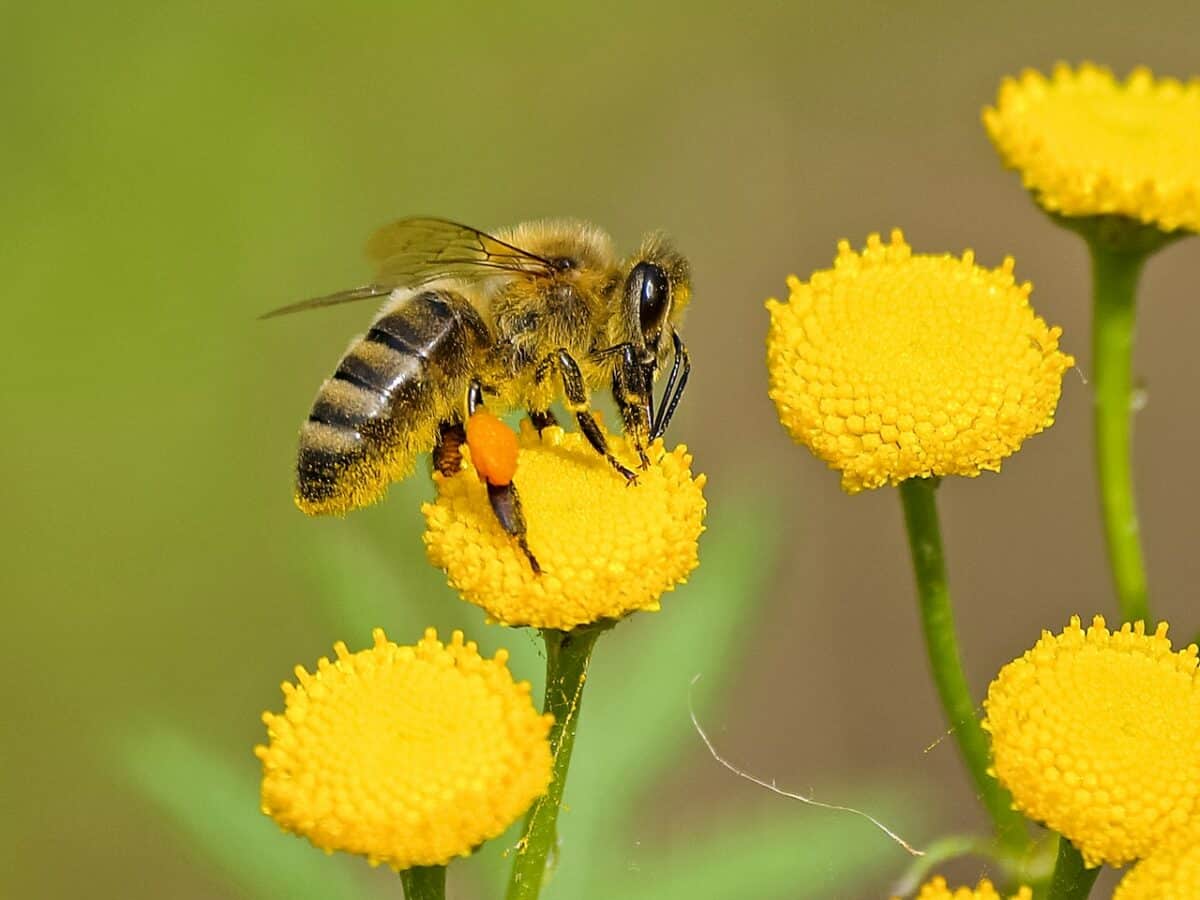
Symbiotic relationships hold great significance in the animal kingdom. They provide critical features for the survival and overall thriving of the species involved.
A perfect example of a mutualistic symbiotic relationship is between honeybees and flowering plants. In this relationship, the bees collect nectar from the flowers, aiding in pollination, while the flowers provide the bees with food. This relationship is necessary for the propagation of plants and for bees to have a food source to survive.
Similarly, the mutualistic relationship between ants and aphids can also be observed in nature. Ants provide protection and care for the aphids in exchange for a sweet, sugary substance called honeydew that the aphids produce. The relationship between these two benefits both parties. The ants get a readily available food source, and the aphids receive much-needed protection.
Besides mutualistic symbiosis, other types, such as commensalism and parasitism, are prevalent in the animal kingdom, which also play an essential role in the ecosystem.
Different Types of Symbiotic Relationships
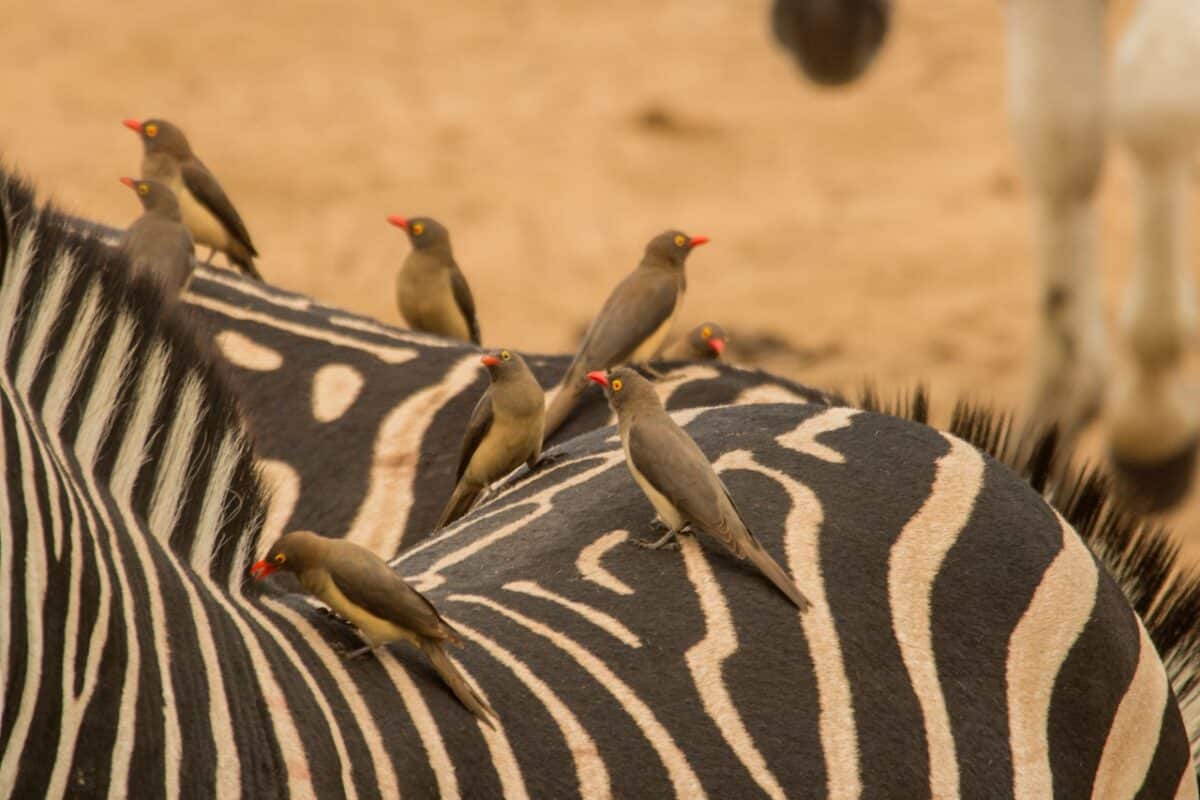
Symbiotic relationships can be classified into three main types: mutualism, commensalism, and parasitism.
- Mutualism: In mutualistic relationships, both species involved benefit from the interaction. Each organism provides resources or services that the other needs. An example is the relationship between flowering plants and pollinators, where the plants provide nectar as a food source, and the pollinators transfer pollen between flowers, aiding in reproduction.
- Commensalism: Commensalism occurs when one organism benefits from the relationship, while the other is neither harmed nor benefited. The organism that benefits often gains shelter, support, or transportation. For instance, certain bird species may build nests in trees, benefiting from the tree’s structure without affecting the tree’s health or survival.
- Parasitism: Parasitic relationships involve one organism (the parasite) benefiting at the expense of the other (the host). The parasite depends on the host for resources or habitat, often causing harm or damage in the process. A well-known example is the relationship between ticks and mammals, where ticks feed on the blood of the host, potentially transmitting diseases while obtaining nutrients for their survival.
These types of symbiotic relationships showcase the various ways organisms interact with each other, shaping ecosystems and influencing the balance of life.
Examples of Mutualism
Clownfish and Anemone
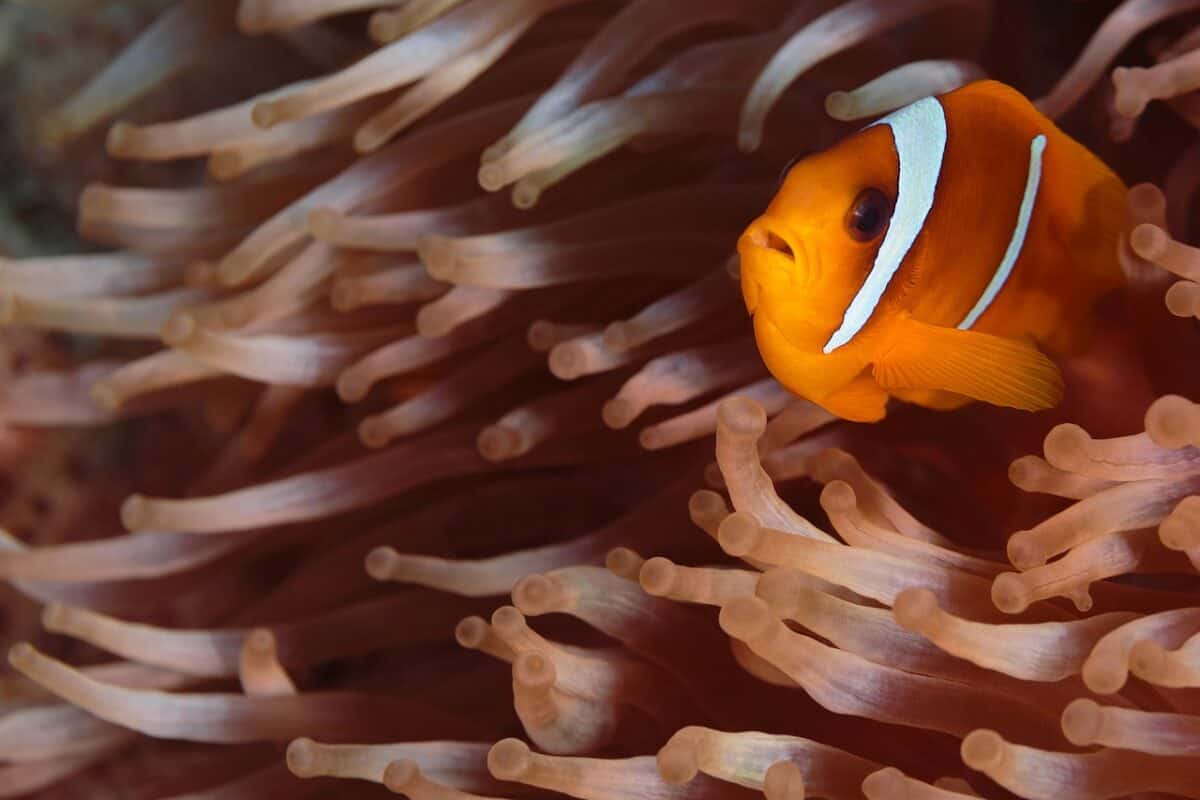
One of the best-known examples of mutualism is the interaction between clownfish and anemone. This relationship benefits both parties. The anemone provides a safe home for the clownfish, while the clownfish protects the anemone from predators and parasites. The clownfish also provides nutrients to the anemone through its waste. In return, the anemone offers the clownfish protection from predators and shelter from ocean currents.
Oxpeckers and Large Mammals
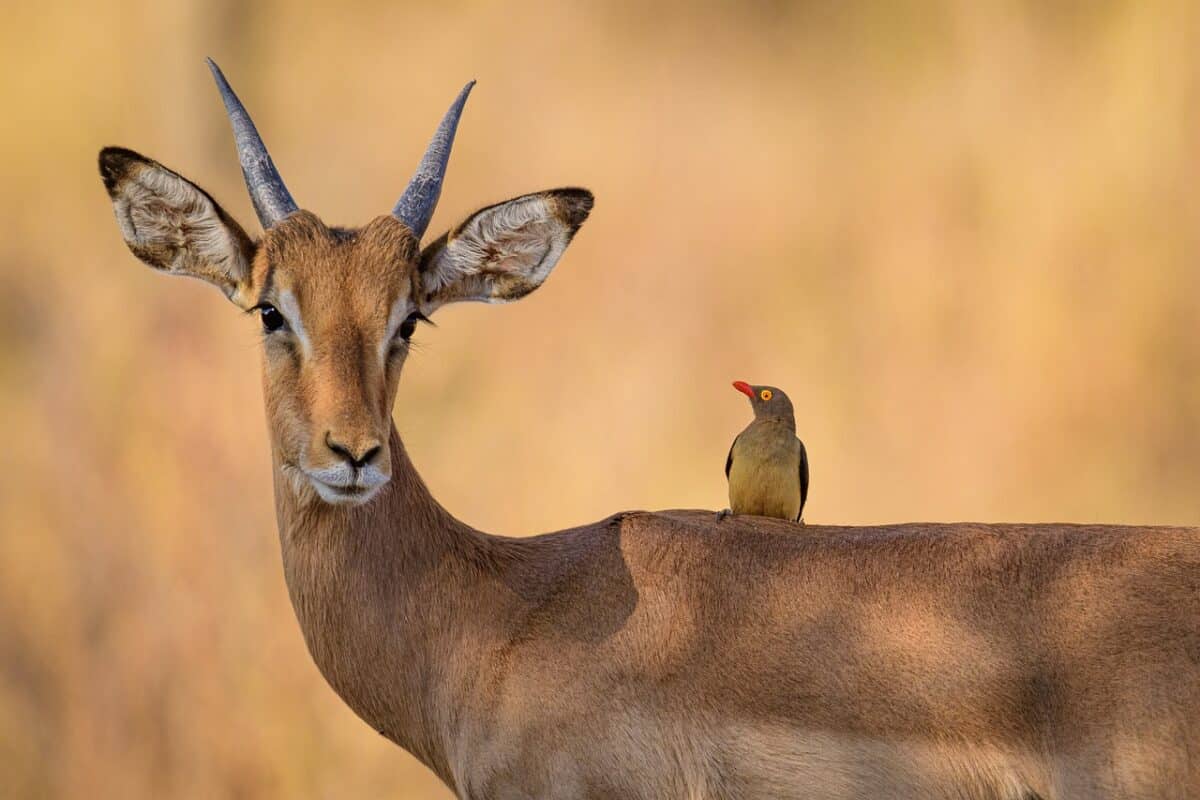
Oxpeckers are birds commonly found in Africa, and they are known to have a mutualistic relationship with large mammals such as giraffes, zebras, and rhinoceroses.
Also, Oxpeckers feed on ticks and other parasites that live on these animals’ skin. In return, the animals are relieved of their parasites. This interaction benefits both parties, as the oxpeckers get a meal, and the animals get relief from bothersome parasites.
Cleaner Shrimp and Fish
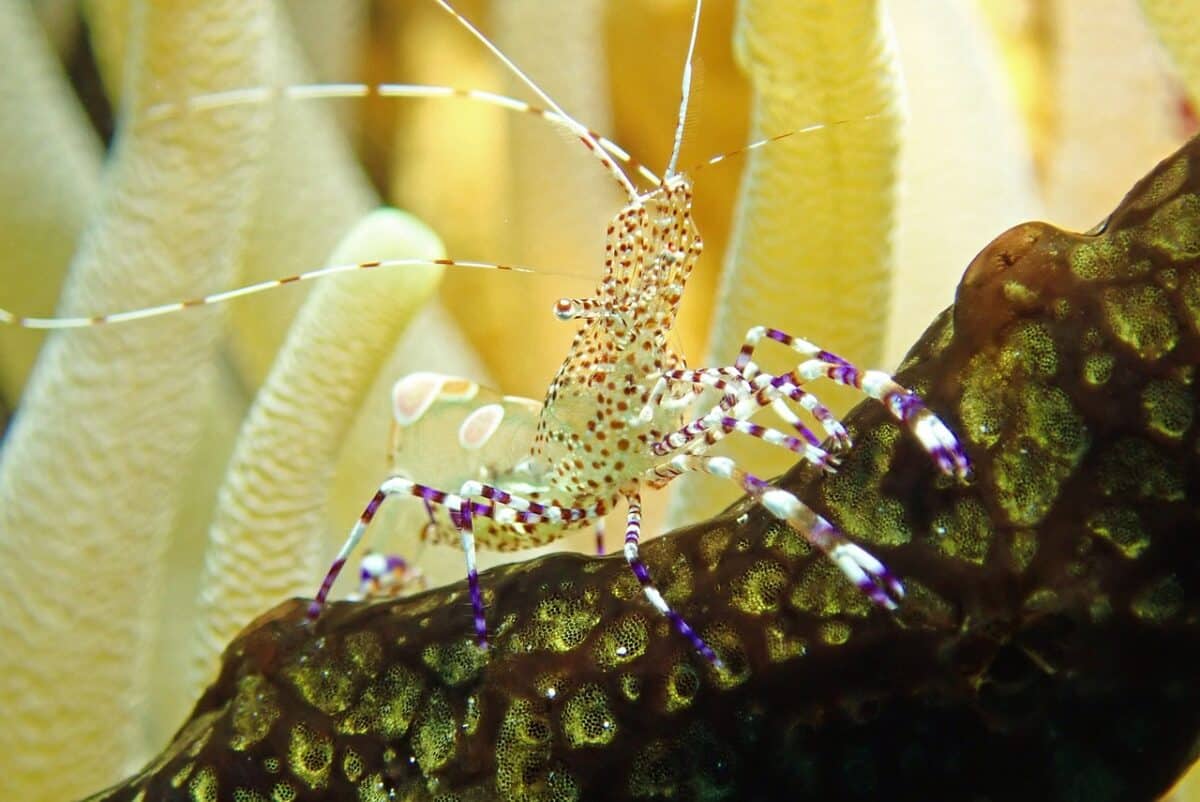
Cleaner shrimp are a crustacean that cleans other fish’s skin. They remove parasites and dead skin cells, which in turn helps the fish stay healthy. This interaction benefits both parties, as the shrimp get a meal, and the fish get a spa treatment!
Vampire Bats and Their Prey
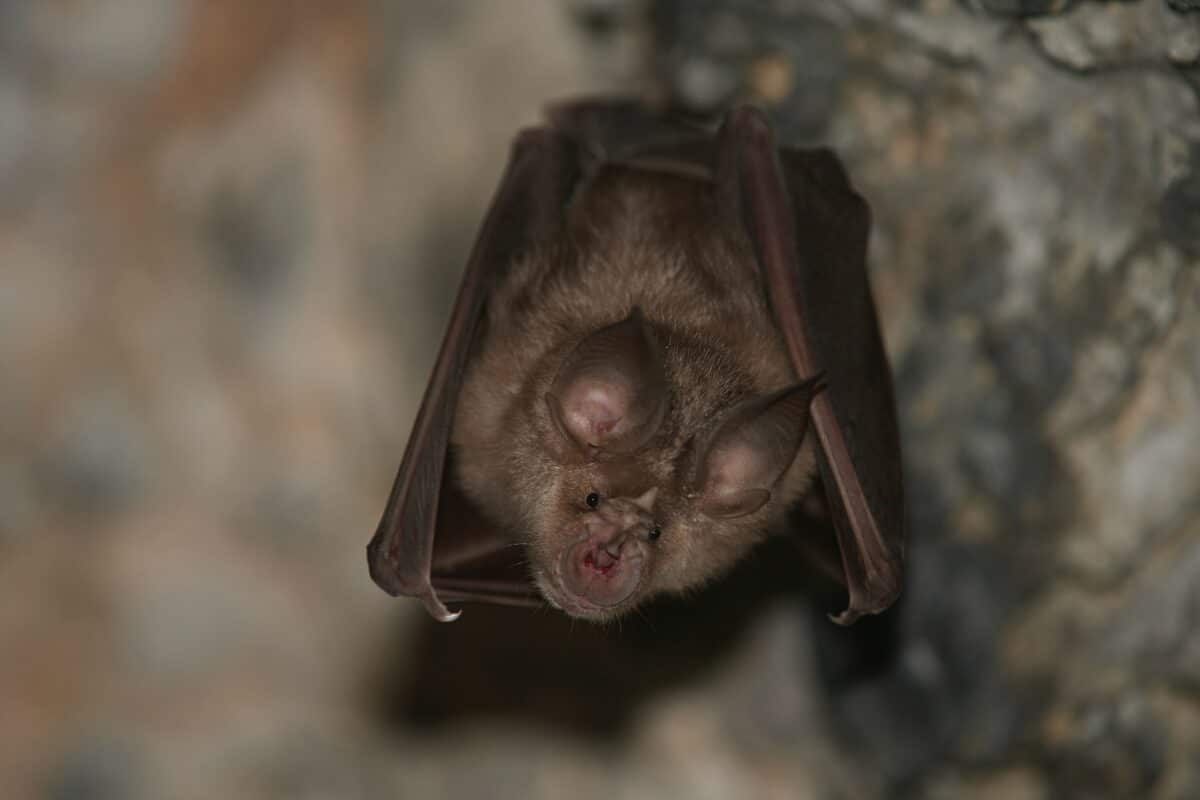
Vampire bats are notorious for their blood-sucking habits, which they rely on to survive. However, what’s fascinating is the relationship they have with their prey, which is often cattle or other large mammals.
These bats have evolved to have a highly efficient way of seeking the perfect blood meal, which involves listening to their prey’s breathing and heart rate to locate the best spot. In return for their blood, the bats actually help their prey by reducing the population of other blood-sucking pests, such as mosquitoes and ticks.
Goby Fish and Pistol Shrimp
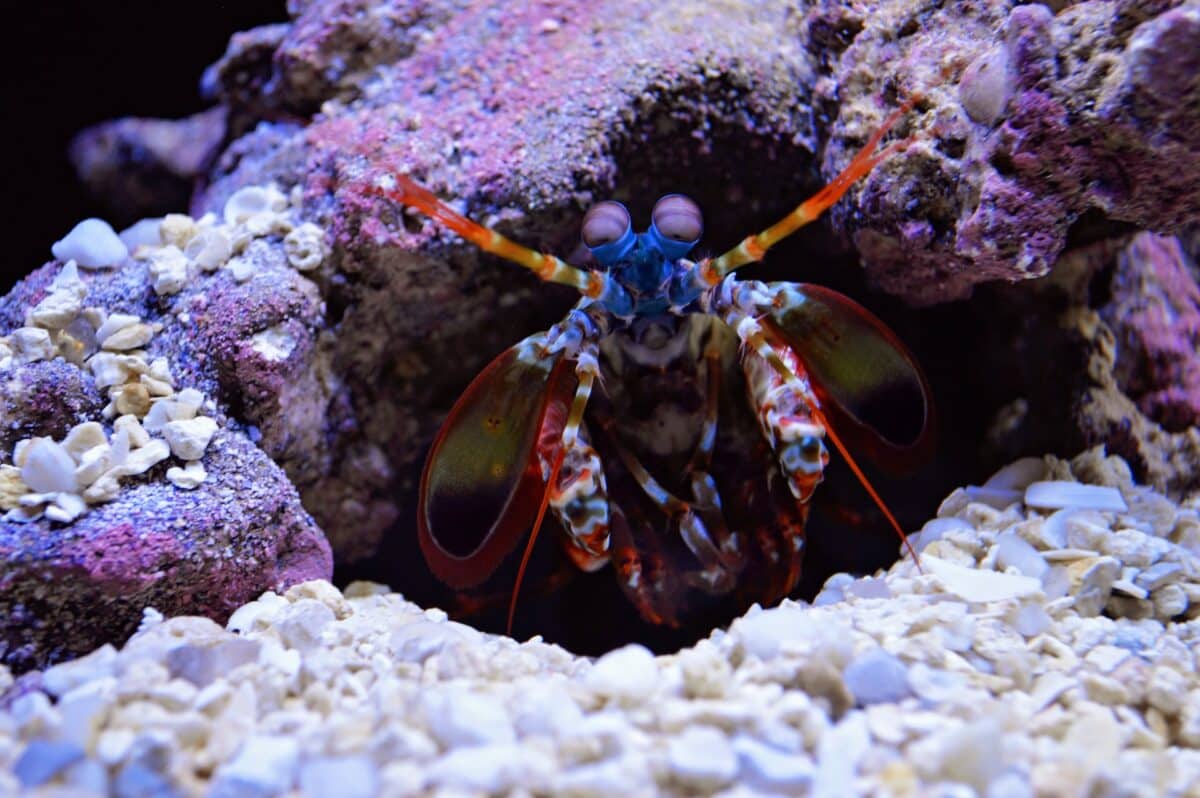
The shrimp is blind and relies on the fish to act as a guide and warn it of danger. In return, the shrimp uses its powerful claw to dig burrows in the sand for the fish to hide in. This partnership protects the goby fish from predators, and the shrimp has a reliable food source.
(Find out more about the Pistol Shrimp, the James Bond of the sea, here.)
Sloths and Algae
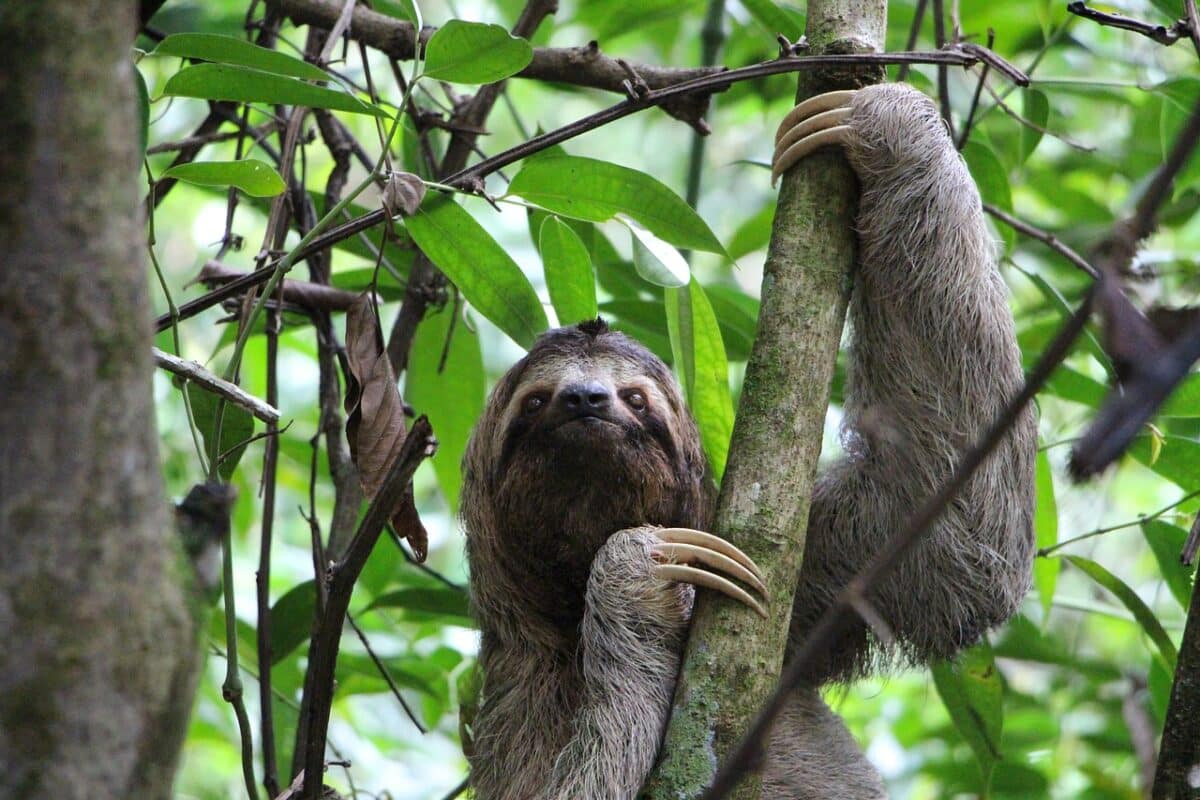
Sloths may seem like slow and lazy creatures, but they have a fascinating symbiotic relationship with algae. The slow-moving lifestyle of the sloth allows algae to grow on their fur, providing a reliable source of food for the sloth.
In return, the algae help to camouflage the sloth from predators, making it less conspicuous to animals on the forest floor. This unusual relationship is beneficial to both parties, providing food and protection.
Examples of Commensalism
Remora and Sharks
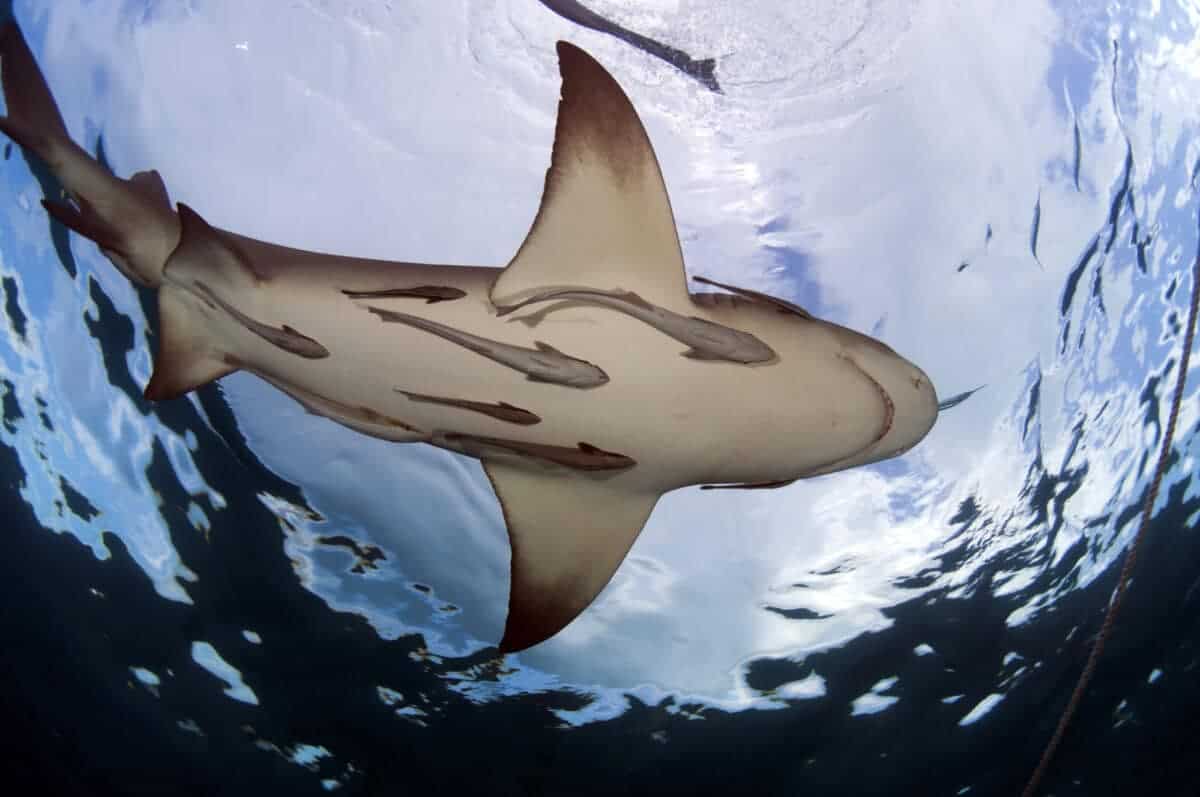
The relationship between Remoras and Sharks is a classic example of commensalism. Remoras are fish that attach themselves to larger marine animals such as sharks, rays, whales, or sea turtles. They’re able to do this by using a suction disc on their head and riding on them to move around the ocean effortlessly.
Remoras benefit from the relationship by feeding on the leftover food that the host organism leaves behind, while the shark receives no benefit or damage from the Remora’s presence. Remoras also act as natural cleaners, removing parasites and dead skin from the host, which can potentially increase their lifespan.
(Learn about other fascinating species that live underwater here)
Barnacles and Whales
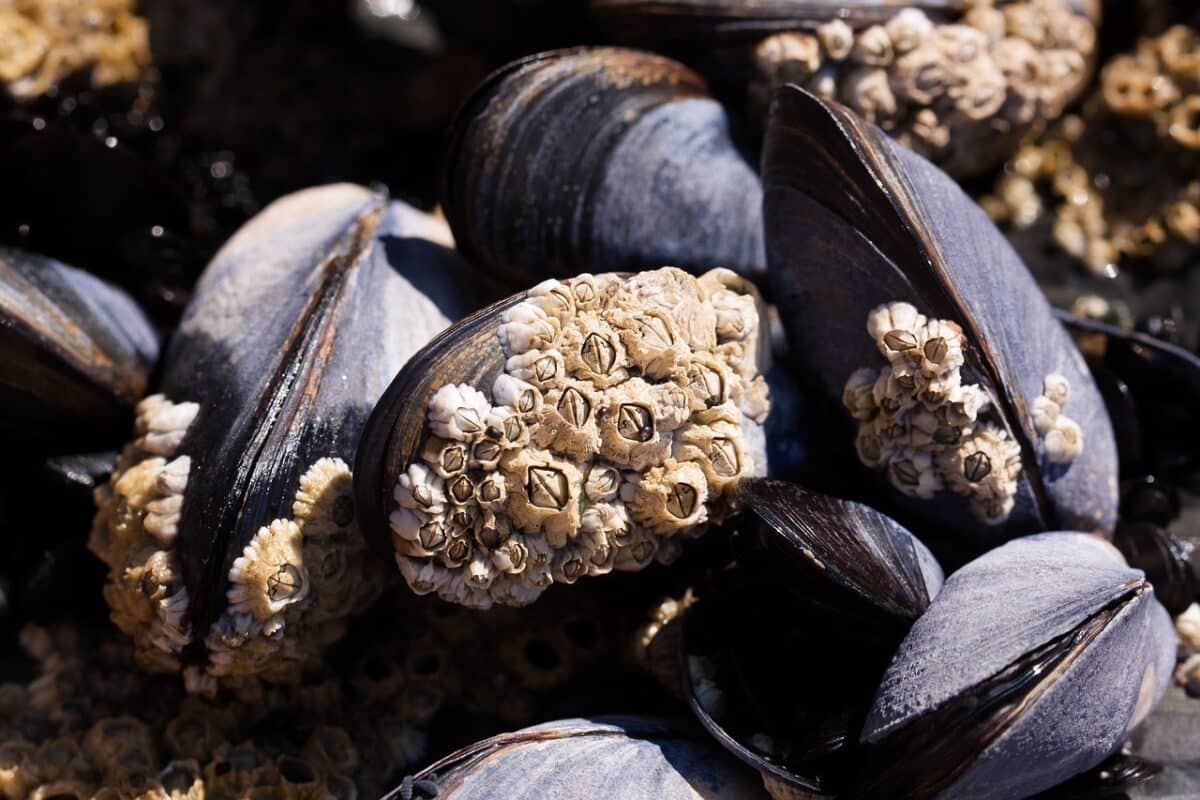
Barnacles benefit from protection and a steady food supply due to their host’s movement through ocean currents. In return, barnacles do not harm the host – but they also don’t provide a known benefit to them in the relationship.
However, in some cases, high barnacle density can cause skin irritation or restrict their host’s movements, negatively impacting the host’s health.
Cattle Egrets and Cattle
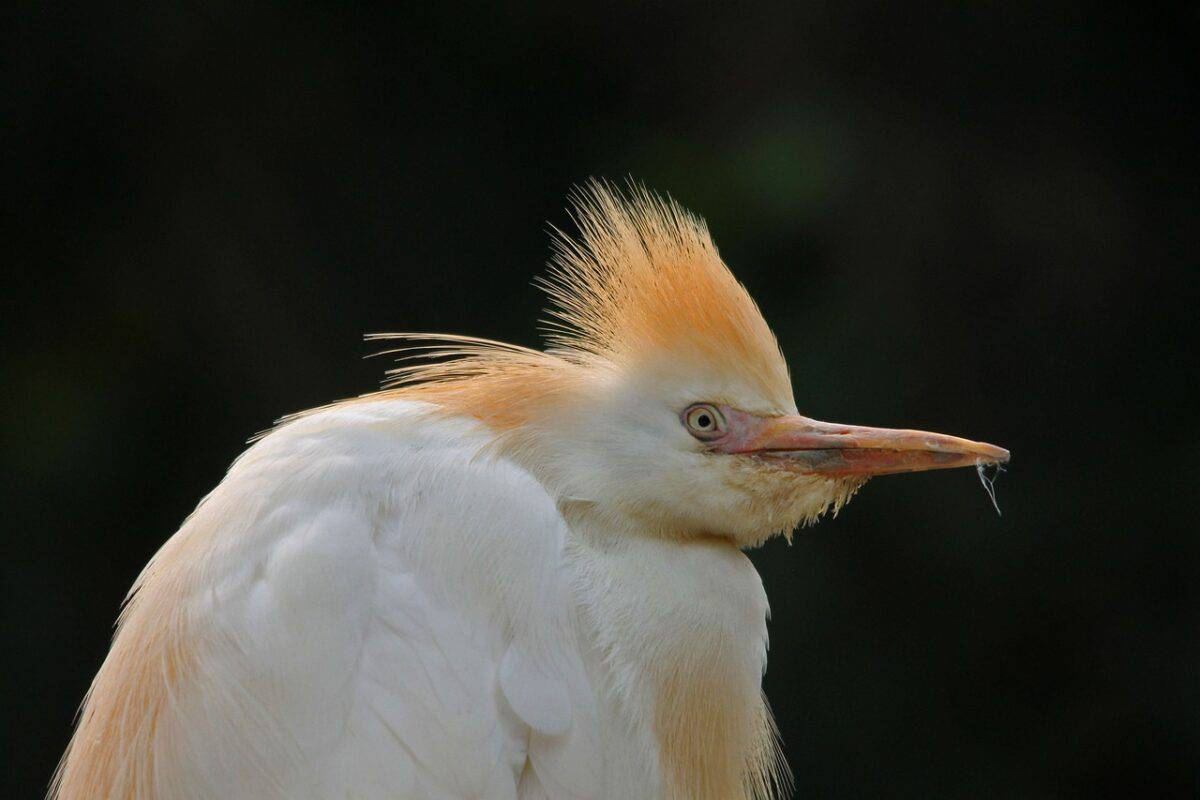
Cattle Egrets, or “Bubulcus ibis,” are birds commonly associated with grazing cattle, horses, or buffaloes. These birds benefit from the relationship by foraging for insects from the disturbed ground caused by the host’s grazing activities.
The cattle (horses or buffaloes) do not benefit directly from the relationship. However, studies have shown that livestock egrets can reduce the population of pests and parasites that affect the host’s health, such as ticks and horseflies.
Importance of Animal Symbiotic Relationships
Symbiotic relationships play a crucial role in maintaining the balance of an ecosystem. For example, pollinating insects like bees and butterflies have a symbiotic relationship with plants.
The bees and butterflies obtain nectar and pollen from the flowers, while the plants benefit from the pollination process that helps them reproduce. Without pollinators, the plant population would decline, leading to a food shortage for other animals that rely on these plants as a food source.
Similarly, nitrogen-fixing bacteria form a symbiotic relationship with certain plants, converting atmospheric nitrogen into a usable form of nitrogen that the plants can absorb. This process helps maintain the soil’s nutrient balance, allowing plants to grow and support other organisms in the food chain.
However, if a symbiotic relationship is disrupted, it can have negative consequences. For instance, the decline of pollinators due to factors like habitat loss or pesticide use can lead to a decrease in plant pollination, affecting the reproduction and abundance of plant species, and ultimately impacting the entire ecosystem’s dynamics.
Disruptions in symbiotic relationships can have cascading effects, disrupting trophic interactions, altering species composition, and compromising the overall balance and health of ecosystems.
Final Thoughts
Studying symbiotic relationships has provided valuable insights into how the natural world operates and how we can apply these principles to create sustainable solutions for a better future.
As we continue to explore and learn more about symbiosis, we can take steps to protect and preserve these relationships, ensuring that we continue to benefit from our planet’s incredible biodiversity.
These relationships impact ecosystems, improve survival rates, and have led to significant advancements in medicine and technology. It is crucial to understand the importance of symbiosis in the animal kingdom and how these relationships can be threatened by environmental factors such as climate change and human activities.
Thank you for reading this post about the impressive animal symbiotic relationships in nature! Continue your exploration of the animal kingdom and find out which animals mate for life here, or read about species that have essential functions within their ecosystems.
Join our Forum for free today!


